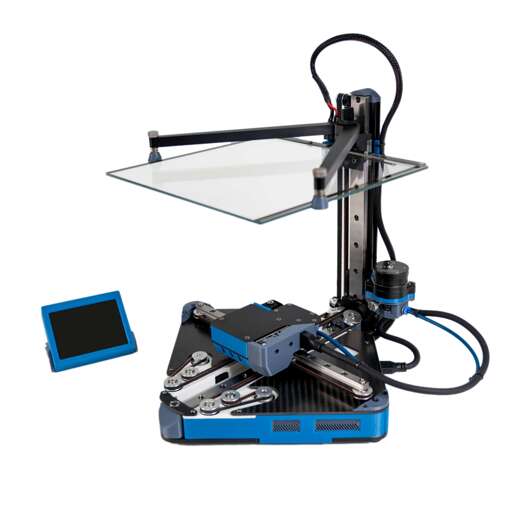I am new to 3D printing, but have always wanted to get into it. Unfortunately, I have very limited space and no dedicated area that I could call my workshop. I also travel frequently, and I would like something where I could take it with me for the day.
Therefore, I would like a portable, or at least very small printer. AFAIK, the new Positron V3.2 is purpose-built to solve this kind of problem.
I am asking whether that model is a good idea for a beginner. My main concern is the price, which I am willing to put up with if there really is no other portable printer.
My other concern is just the fact that it is new and I may be too inexperienced with printers to deal with problems that are natural in first-gen products. I have a decent amount of experience soldering and other electronics work, but nothing with small moving parts. Also IDK if sourcing parts would be an issue.
If, in your experiences, these make it not worth it as a first printer, what would you recommend as a portable printer?



So much of 3d printing comes down to getting everything perfectly aligned and dialed in. On a foldable printer like this, I would expect you to spend a ton of time calibrating after every time you move it.
I think you’re on the right track with not wanting to deal with the problems likely to come with a first gen printer. Unfortunately I can’t recommend another product that fits your particular use case, maybe a https://bambulab.com/en-us/a1-mini but it’s not as portable as that positron.
Agreed, imho calibration is the biggest issue. Also print times - generally I wouldn’t leave a print job running (e.g. in hotel room whilst I’m out sightseeing) without being near or at least monitoring it. And finally the smell of some filaments can bother some people.
On the otherhand it looks really neat, the size is great and I think it’d be a good solution to your requirements. Just don’t be surprised if you end up making a permanent space for it in order to avoid too much recalibration everytime you set it up 😂
And addressing your other concern, I think part of the original reprap ideal was that a 3D printer could print parts to build another printer, and parts to modify and improve itself. I’ve got a i3 clone and parts are usually generic and off the shelf - you might be able to check what parts it uses?
I just realized… it looks like an upside down printer? The extruder is on the bottom on x/y sliders and the bed moves up. That feels like a bad idea to me, it’ll make bed adhesion so much more important.
https://www.youtube.com/watch?v=X_QLxTVtyng
I’m skeptical of claims + quality
If you think about bed adhesion, the forces on a light plastic part from gravity are negligible. Think of how much force it takes to pop a finished part off the bed compared to the weight of the part. When you have adhesion problems, I’m sure the plastic shrinkage is causing pretty large forces (or on a tall part the nozzle bumps the top of the print and has a long lever arm to pry the part off the build surface).